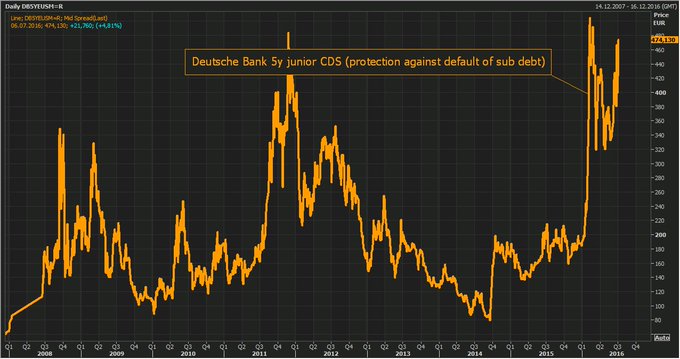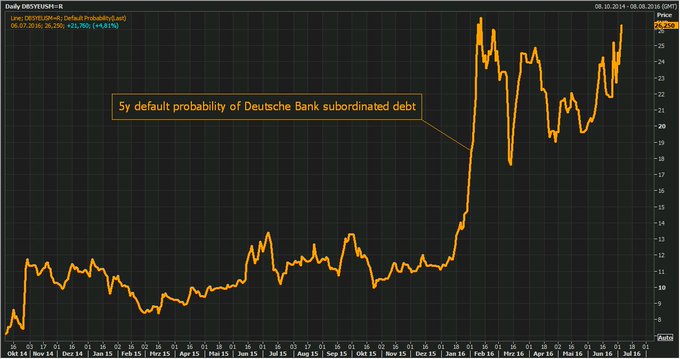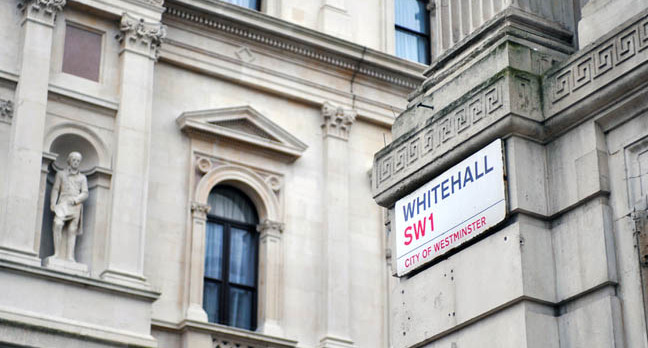Low Interest Rate Persons
She is a low-interest-rate person. She has always been a low-interest-rate person. And I must be honest. I am a low-interest-rate person. If we raise interest rates, and if the dollar starts getting too strong, we’re going to have some very major problems.
— Donald Trump
BALTIMORE – With startling clarity, the presumptive Republican presidential nominee described himself – and Fed chief Janet Yellen. But he could have just as easily been talking about his rival in this year’s presidential elections, Hillary Clinton.
Donald Trump had already gone broke – twice – by the time Bill Clinton took office. But then, the combination of lower interest rates and rising asset prices saved him.
And extraordinary abundance and prosperity of the Clinton years owes little to Mr. and Mrs. Clinton and much to the fact that Alan Greenspan had inaugurated his famous “Greenspan Put” in 1987.
Greenspan reassured investors that he had their backs with a rate cut whenever the stock market took a turn for the worse. This led to an “illusion of prosperity,” as stock prices rose, helping Bill get reelected… and gaining national prominence for Hillary as the aggrieved wife in the Monica Lewinsky affair.
Stock prices filled with hot air, until the bubble in the Nasdaq blew up in Clinton’s last year in office. Both of this year’s presumptive candidates are “low interest rate” people, all right. Their adult lives were marked by the credit cycle and their careers shaped by ballooning debt. And now, almost the entire world economy depends on low rates.
We live on Planet Debt.
Subzero Yields
The amount of government debt trading below zero yield rose to $11 trillion last week. In Japan, negative yields run out the yield curve until 2051. Overall, interest rates are said to be lower than they’ve been in 5,000 years.This is a fanciful but entertaining factoid; you can’t compare the apples of Sargon the Great to those of Donald the Tremendous.
Image pinterest.com
“How cometh it to be that interest rates ride so low… while the hack and the hustler ride so high?” you might wonder. We are glad you asked.
We have been connecting dots. These are dots that others do not want to connect. Because they connect to too many reputations, too many fortunes, and too many opinions.
We are talking about the line that runs from the post-1971 money system to the Deep State, passing through the spectacular rise of China… the spectacular fall of the U.S. (where the average man has made no financial progress in the last 40 years)… to the remarkable luck of the 1% (who got richer and richer, as most people around them lost ground).
Yes, the line ties together the great kvetches of our time: inequality, stagnation, alienation, globalization, debt, the failure of the economy, the failure of democracy… and the failure of our own culture.
According to political scientist Charles Murray, white middle- and lower-middle-class Americans now suffer from the ills that were once confined to ghettos – broken homes, drug addiction, unemployment, and violence. Surely, we’re not going to try to pin that on the Deep State, too?
Yes – we are.
Image via pinterest.com
Deep State Money
“Our” money system is not “ours.” It is the money system created by, for, and of the financial insiders. It is the Deep State’s money system! But wait… we sense an objection: “Isn’t it the money system set up by our elected representatives – and supposed to serve us all?”Oh, dear reader, sometimes you make us laugh. Really, where have you been? America’s money system is largely under the control of one organization – the Fed.
And the Fed was set up at a secret meeting of plutocrats and bankers (no kidding they rode down to Georgia in a private train, using phony names so they wouldn’t be identified).
Image via Wikimedia Commons
It is not owned by the people, nor by their government. It is owned by private banks. And it is controlled by a small group of unelected insiders – mostly bankers and their economists. It has never been audited. And no member of Congress really knows what it is up to.
Miracle-Gro
On August 15, 1971, President Nixon made the fateful announcement that the world’s reserve currency, the U.S. dollar, would no longer be directly convertible to gold. But do you think Mr. Nixon came up with that on his own? Do you think he was advised by our elected representatives? No chance.Instead, the insiders, the bankers, and the deepest of the Deep State elite had his ear. The president – and probably almost everyone else – had no real idea of what was going on, or why.
Photo via Library of Congress
But that was 45 years ago. A lot has happened since. The new money was a Sahara for the common American; his income growth dried up… his wealth ceased growing. But it was Miracle-Gro for the Deep State.
The insiders sank their roots deeper and deeper into the U.S. economy, sucking out more and more wealth and power. Whether the insiders fully realized what they were doing in August 1971, we don’t know. But as the system developed, they liked it. More than that, they became dependent on it.
And now, almost the entire world – its stocks, bonds, real estate, and collectibles. along with its businesses, retailers, factories, investors, bonused-up executives, papered-up speculators, Ph.D. economists, and politicians – almost everybody with wealth or power depends on the insiders’ cheap money.
“Government can have no more than two legitimate purposes,” wrote the 18th-century English political philosopher William Godwin, “the suppression of injustice against individuals within the community and the common defense against external invasion.”
But now it has another purpose – a goal it is desperate to achieve – keeping the low-interest rate planet spinning.
Chart by: StockCharts
Chart and image captions by PT
The above article originally appeared at the Diary of a Rogue Economist, written for Bonner & Partners. Bill Bonner founded Agora, Inc in 1978. It has since grown into one of the largest independent newsletter publishing companies in the world. He has also written three New York Times bestselling books, Financial Reckoning Day, Empire of Debt and Mobs, Messiahs and Markets.



